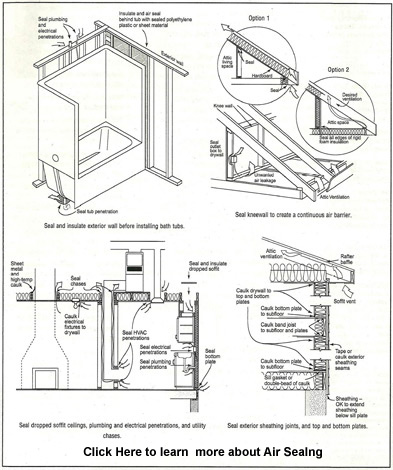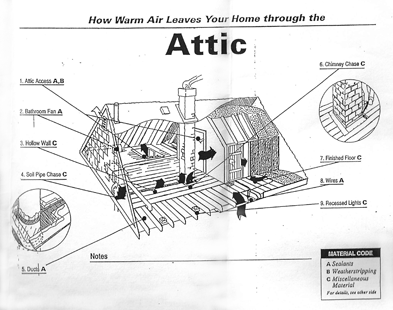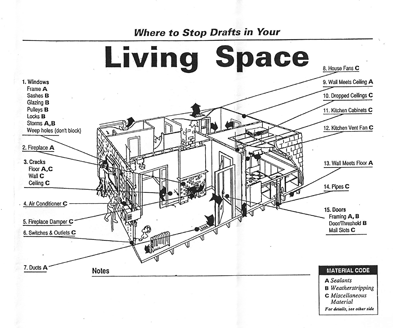OUR SERVICES
With as much as 50% of your energy going out the roof,
you cannot afford “NOT TO INSULATE!”

Milwaukee Home Sealing
Home Sealing is the process recommended by the EPA to help increase the comfort & energy efficiency of your home by improving the “Envelope”, the outer walls, ceiling, windows & floors.
To improve the envelope of your home:
- Seal Air leaks to stop drafts & get full performance from your insulation
- Add insulation to stay comfortable during periods of extreme temperatures
Where to insulate
Adding insulation in the areas shown here may be the best way to improve your home’s energy efficiency.
Insulation
First, check the insulation in your attic, ceilings, exterior and basement walls, floors, and crawl spaces to see if it meets the levels recommended for your area. Insulation is measured in R-values – the higher the R-value, the better your walls and roofs will resist the transfer of heat.
Improving your Home Envelope
The exterior of your home is called the “envelope” or “shell”. The envelope is made up of the outer walls, ceiling, windows & floor. By Piper AirSealing & insulating you can improve your “envelope” and make your home more comfortable and help lower your energy bills.


Hidden Air Leaks
Air leaks can make your home uncomfortable. In the winter, drafty windows, doors, cold walls or ceilings & ice build-up or ice dams on the roof are all symptoms of air leaks or poor insulation in attic. In the summer, ceilings that are hot to the touch & upstairs rooms that are uncomfortably hot, no matter how the A/C is set , can also be a sign of air leaks & insufficient insulation. Fixing air leaks can make your home more comfortable & help you get full performance from your insulation and your heating & cooling system.
*If you add up all the hidden air leaks in your home they can equal a hole the size of an open window.
There are many ways to fix air leaks, such as caulking, using spray foam, and weather stripping for closing smaller cracks and gaps. Plywood/drywall & rigid foam insulation may be used for plugging larger holes. Sheet metal and High Temperature Caulking can be used to close gaps around chimney and furnace flues. Call us and let us help reduce your air infiltration issues.
PLEASE KEEP IN MIND: Moisture is inherent in any home. Taking a bath, washing and drying the laundry, or doing the dishes are just a few of the ways moisture is added to the home. All efficient insulations can magnify an existing problem if the capacity to absorb moisture by capillary action is not inherent in the material. An un-insulated home is less liable to create a problem because the excess moisture is evaporated or carried away through the same cracks and leaks through which valuable heat is lost. Gas and oil furnaces which release more moisture vapor than did the older conventional coal heating units can increase moisture problems. The condensation of this vapor in the side walls occurs in all types of insulation and in virtually all applications: but in cellulose insulation it is absorbed and dissipated. This moisture is held in suspension in Weather Blanket and is released through the material’s “breathing action,” (the slow movement of air current through the cells of the insulation.)



